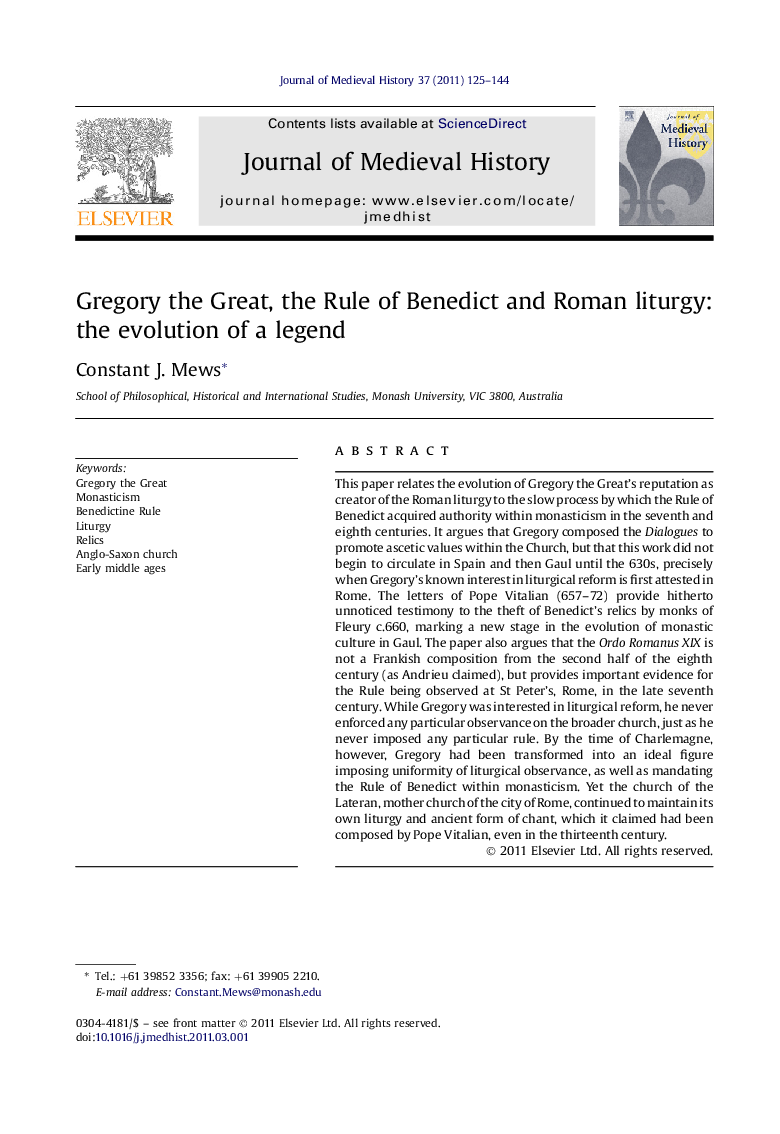| کد مقاله | کد نشریه | سال انتشار | مقاله انگلیسی | نسخه تمام متن |
|---|---|---|---|---|
| 1160102 | 959763 | 2011 | 20 صفحه PDF | دانلود رایگان |

This paper relates the evolution of Gregory the Great’s reputation as creator of the Roman liturgy to the slow process by which the Rule of Benedict acquired authority within monasticism in the seventh and eighth centuries. It argues that Gregory composed the Dialogues to promote ascetic values within the Church, but that this work did not begin to circulate in Spain and then Gaul until the 630s, precisely when Gregory’s known interest in liturgical reform is first attested in Rome. The letters of Pope Vitalian (657–72) provide hitherto unnoticed testimony to the theft of Benedict’s relics by monks of Fleury c.660, marking a new stage in the evolution of monastic culture in Gaul. The paper also argues that the Ordo Romanus XIX is not a Frankish composition from the second half of the eighth century (as Andrieu claimed), but provides important evidence for the Rule being observed at St Peter’s, Rome, in the late seventh century. While Gregory was interested in liturgical reform, he never enforced any particular observance on the broader church, just as he never imposed any particular rule. By the time of Charlemagne, however, Gregory had been transformed into an ideal figure imposing uniformity of liturgical observance, as well as mandating the Rule of Benedict within monasticism. Yet the church of the Lateran, mother church of the city of Rome, continued to maintain its own liturgy and ancient form of chant, which it claimed had been composed by Pope Vitalian, even in the thirteenth century.
► Gregory's Dialogues authentic, but only become known during papacy of Honorius (825–38).
► Growing respect for authority of Benedict and Gregory over course of 7th cent.
► Continuing division between liturgical memory at St Peter’s and at Lateran.
► Unnoticed report of Honorius about Gregory's liturgical achievements.
► Descriptions of St Peter's and Lateran highlight liturgical differences within Rome.
Journal: Journal of Medieval History - Volume 37, Issue 2, June 2011, Pages 125–144